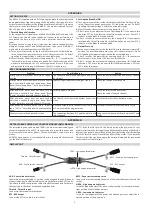
Super 80 Professional – AOM
PERFORMANCE
Section 23 Page 2
Super 80 Professional – Aircraft Operating Manual
Coolsky, 2018
GENERAL
Standard Take-Off Thrust
In general, standard take-off thrust should
be used where permitted. The use of
standard thrust will improve engine reliability,
lengthen engine life, and substantially
reduce operating costs by reducing peak
pressures and temperatures
If an engine failure occurs during the take-
off roll at or after V
1
, standard thrust on the
remaining engine will satisfy the take-off
requirements.
Some conditions which prohibit the use of
standard thrust:
•
Tailwind
•
Snow, slush, ice or standing water on
the runway
•
De-ice/anti-ice fluid has been
applied and temperatures at or
below 6°C/42°F
•
Engine anti-ice ON
•
MEL item that requires a take-off
weight penalty
•
Actual TOW from load close-out or
ACARS is greater that assumed TOW
In the above conditions, a higher than
standard thrust take-off setting may be
required.
Cruise Information
Cruise EPR tables are provided for various
Mach numbers and True airspeeds at
standard temperature.
The Long Range Cruise table permits
determination of the most economical
cruise (most NM flow per thousand pounds
of fuel burned).
A 320 knots cruise table is provided for use at
altitudes below the 320 knots/Mach
crossover altitude.
















































